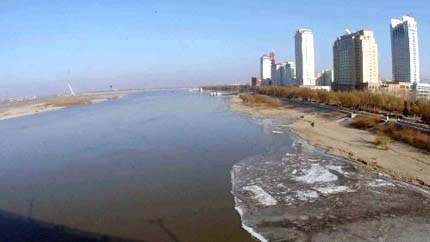Northeast China's Heilongjiang Province has shut down 110 polluting enterprises to curb pollution in the Songhua River.
"The provincial government inspected 4,061 enterprises that emit pollution, shut down 110 and suspended 173 in a three-month campaign that ended in early July," said Li Ping, head of the Heilongjiang provincial bureau of environmental protection.
In 2005 the Songhua River was seriously polluted after 100 tons of benzene-related pollutants flowed into the upper reaches of the river due to a chemical plant explosion in Jilin city.
The contamination forced Harbin, the capital of Heilongjiang Province, to temporarily suspend water supplies to 3.8 million people.
The pollution also raised concerns in Russia because the Songhua River empties into the Heilongjiang River, which flows between China and Russia.
Jilin City in Jilin Province has installed a sewage treatment plant at a cost of 620 million yuan, allowing 90 percent of domestic and industrial sewage to be processed locally.
Also, Mingshui County in Heilongjiang Province has also shut down two foreign-invested enterprises that previously accounted for one third of the county's direct foreign investment.
Automatic devices have been put into use for real-time monitoring of the water quality of the Songhua River and Heilong River.
Wang Xun, an entrepreneur from the coastal city of Wenzhou who set up a cornstarch plant in Mingshui this year, invested 15 million yuan to add an environmental protection facility onto his plant.
"The local government has been telling me that environmental protection is the responsibility of enterprises and the prerequisite of sustainable development," Wang said.
The Chinese government drew up a plan last year to curb pollution in the tainted Songhua River. Their goal is to make 90 percent of the water drinkable by 2010. The plan includes 222 pollution control projects, a combined investment of 13.36 billion yuan (US$1.77 billion).
Almost 40 percent of the pollution control projects have been completed or are well underway, according to an official with the State Environmental Protection Administration (SEPA).
Three northeastern provinces shut down 42 factories for failing to control pollution in the Songhua River valley during the first six months of this year. The closures reduced pollutant discharges by about 6,327 tons in terms of the chemical oxygen demand, the official said.
Li Ping said that water in the Songhua River has shown signs of improvement.
The official said that water quality had temporarily reached Class Three, or drinkable, last month. This was "better than the corresponding period last year" in Sanjiangkou, where the Songhua River joins Heilong River before it flows downstream into Harbin, capital of Heilongjiang and the Russian Far East city of Khabarovsk.
The improvement in water quality was also attributed to a marked decrease in rainfall this summer.
The official also said that local fishermen had told him the fish from Sanjiangkou tasted better than in the previous years.
All About Songhua River
(Xinhua News Agency September 21, 2007)






